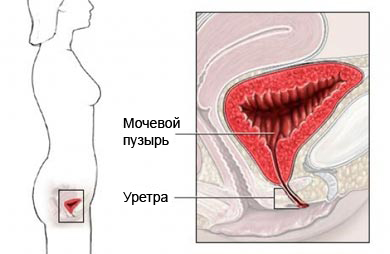Termination of uncontrolled urination in women – Free synthetic loop
For installing the free synthetic loop
Stress is one of the many causes of uncontrolled leaking of urine. Operation Installation free synthetic loop eliminates incontinence female.
Urinary incontinence is most often caused by weakening of the pelvic muscles, which hold the bladder in the closed position. The muscles may be weakened as a result of:
- Pregnancy;
- Childbirth;
- Menopause;
- Previous pelvic surgery (operations);
- Physical inactivity.

Reasons for the operation
The purpose of the operation is, to provide additional support to the urethra and stop uncontrolled urination.
Possible complications
Complications are rare, but no operation does not guarantee their absence. Complications, may include:
- Bleeding;
- Infection;
- Reaction to anesthesia;
- Inability to urinate;
- Continued uncontrolled urination;
- Damage to nearby organs and blood vessels;
- Erosion of the mesh material, used during the procedure;
- Pain (eg, during sexual intercourse).
Before the operation, it is necessary to take into account the possibility of these complications.
Activity description
Before surgery
- The doctor will find out the possible causes of urinary incontinence based on a previous medical history;
- There will be a urine test for infections;
- It should go a pelvic examination.
It can be carried out additional inspections:
- Urodynamic testing (Study diuresis) – setting a temporary catheter, for study of bladder function;
- Cystoscopy – procedure, conducted, to examine the inside of the bladder.
Preparing for Surgery
Perhaps it will be necessary to stop taking certain medicines a week before surgery, eg:
- Aspirin or other anti-inflammatory drugs;
- Blood thinners, such as warfarin, Clopidogrel.
It should refrain from eating after midnight the day of surgery.
Anesthesia
The operation is performed under a partial anesthetic, anesthetized patient's lower body. In some cases, it may be used general anesthesia.
Activity description
In the vagina will be made two cuts. Nylon, like a loop tape is inserted into these incisions, to form a hammock. It provides support to the urethra, closing it when you cough or sneeze. The seams not necessary, loop will be held at the surrounding tissue, while the cuts will not heal.
After operation
The patient is delivered to the chamber, If necessary, use a catheter to drain urine.
How long does the surgery?
Duration of operation 1 – 1,5 o'clock.
Will it hurt?
Anesthesia blocks pain during surgery. After operation, may experience some pain or soreness. To reduce discomfort, you need to take pain medication.
The time spent in hospital
The patient is discharged from the hospital the day of surgery.
Postoperative care
In the hospital
First, urine may be a bloody discharge. It extends for some time. When the patient is able to urinate on their own, the catheter is removed. Walking can be started on the day of surgery.
Houses
We need to avoid heavy lifting and strenuous exercise for six weeks after surgery.
To speed up recovery, you need to follow your doctor's instructions.
You should immediately go to the hospital in cases
- There were signs of infection, including fever and chills;
- Krasnoja, swelling, strong pain, bleeding, or any selection from the incision site;
- The inability to reduce pain via Analgesic;
- Cough, breathlessness, or chest pain;
- Nausea or vomiting;
- Problems with urination.
